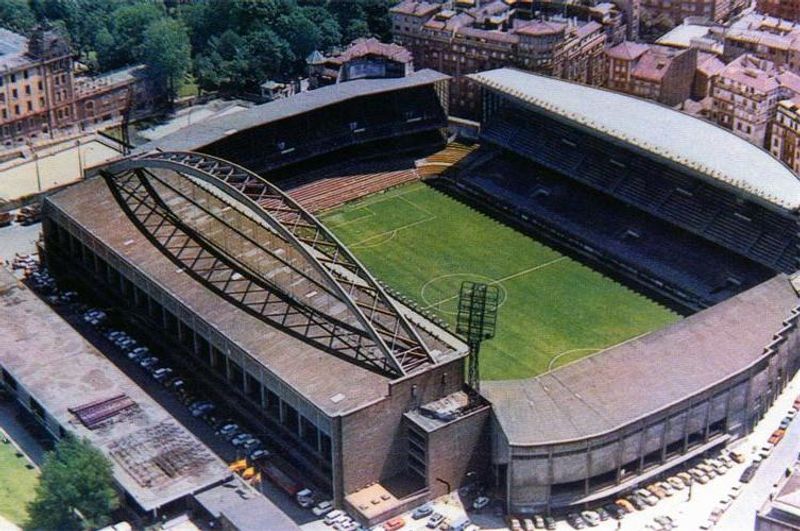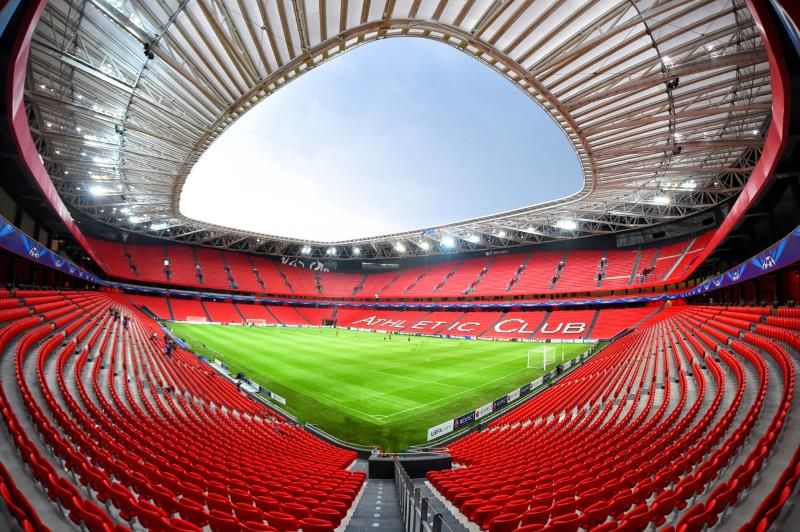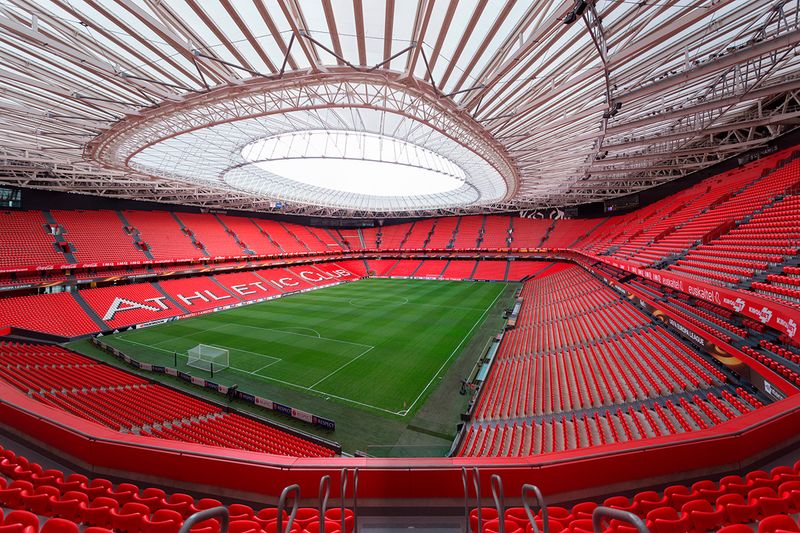Quick Betimate
Popular Leagues
-
UEFA Nations League
-
England (5)
- FA Cup
- Premier League
- Championship
- League 1
- League 2
- National League (1)
- National League North
- National League South
- Premier League 2
- Championship Women
- Development League 2
- FA Cup Women
- FA Trophy
- FA Vase
- Isthmian Division One North
- Isthmian Division One South
- Isthmian Premier Division
- National League Cup
- Northern League Division One
- Northern Premier League
- Reserve Matches
- Southern Premier League Central
- Southern Premier League South
- Super League Women
- U21 Premier League Cup
- Northern Ireland Championship Women
- Northern Ireland Cup
- Northern Ireland League Cup Women
- Northern Ireland Play-Offs
- Northern Ireland Premier Intermediate League
- Northern Ireland Premier League Women (4)
- Northern Ireland Reserve League
- Scotland Regional Cup
- Wales League Cup Women
-
UEFA Champions League (1)
-
UEFA Europa League
-
Spain (63)
- La Liga
- Segunda (11)
- Tercera Group 1 (2)
- Tercera Group 2 (2)
- Tercera Group 3 (2)
- Tercera Group 4 (2)
- Tercera Group 5 (2)
- Tercera Group 6 (2)
- Tercera Group 7 (2)
- Tercera Group 8 (2)
- Tercera Group 9 (2)
- Tercera Group 10 (2)
- Tercera Group 11 (2)
- Tercera Group 12 (2)
- Tercera Group 13 (2)
- Tercera Group 14 (2)
- Tercera Group 15 (2)
- Tercera Group 16 (2)
- Tercera Group 17 (2)
- Tercera Group 18 (2)
- Youth League (2)
- Copa De La Reina (1)
- Copa del Rey
- Kings League - 40 mins play
- Primera Division RFEF Group 1
- Primera Division RFEF Group 2
- Primera Division RFEF Play-Offs (8)
- Primera Federacion Women
- Primera Women
- Queens League - 40 mins play
- Regional Cup
- Regional League
- Regional League Play-Offs
- Segunda Division RFEF Group 1
- Segunda Division RFEF Group 2
- Segunda Division RFEF Group 3
- Segunda Division RFEF Group 4
- Segunda Division RFEF Group 5
- Segunda Division RFEF Play-Offs (5)
- Segunda Federacion Women
- Tercera - Play-Offs
- Tercera Federacion Women
- Women Regional League
- Women Segunda Play-Offs
-
USA (904)
-
Germany (62)
- Bundesliga I
- Bundesliga II
- DFB Pokal
- Regionalliga Bayern
- Regionalliga North
- Regionalliga North East
- Regionalliga South West
- Regionalliga West
- Oberliga Baden-Wuerttemberg (1)
- Oberliga Bayern North (1)
- Oberliga Bayern South
- Oberliga Bremen
- Oberliga Hamburg
- Oberliga Hessen (10)
- Oberliga Mittelrhein (8)
- Oberliga Niederrhein (9)
- Oberliga Niedersachsen
- Oberliga NOFV Nord (8)
- Oberliga NOFV Sud (1)
- Oberliga Rheinland-Pfalz/Saar (9)
- Oberliga Schleswig-Holstein
- Oberliga Westfalen (8)
- 3. Liga
- Bundesliga II Play-Offs
- Bundesliga II Women
- Bundesliga Play-Offs
- Bundesliga U19
- Bundesliga Women
- DFB Pokal Women
- Oberliga Play-Offs (5)
- Regionalliga Play-Offs (2)
- U19 Cup
-
Italy (8)
- Serie A
- Serie B (1)
- Serie C Group A
- Serie C Group B
- Serie C Group C
- Campionato Nazionale
- Campionato Primavera 1 (1)
- Campionato Primavera 2 (1)
- Serie D
- Coppa Italia
- Coppa Italia Women
- Campionato Primavera 3
- Campionato Primavera 4
- Serie A Women
- Serie B Play-Offs (1)
- Serie B Women
- Serie C Play-Offs (2)
- Serie C Super Cup
- Serie D Play-Offs (2)
- U19 League Women
-
France (3)
-
Netherlands (13)
-
Scotland
-
Japan J-League (1)
-
Lebanon League (7)
-
Colombia Primera B (4)
-
Georgia Erovnuli Liga (5)
-
Egypt Division 1 (1)
-
South Korea K League 1 (3)
-
Poland I Liga (2)
-
Brazil Serie B (10)
-
Esport (210)
Other Leagues
-
Albania
-
Algeria (9)
-
Andorra (1)
-
Angola
-
Argentina (69)
- Nacional B (1)
- Primera B Metropolitana (11)
- Primera C Metropolitana (13)
- Reserve League (1)
- Cup (8)
- Torneo A (18)
- Copa Santa Fe
- Championship Women
- Copa de la Liga Profesional
- Copa Santa Fe Women
- Copa Santa Fe Women - 80 mins play
- Liga Profesional (1)
- Liga Profesional Reserves (10)
- Nacional Reserve League (6)
- Regional League
- Youth League
-
Armenia (3)
-
Aruba
-
Australia (133)
- A-League (1)
- A-League Women
- Capital Territory NPL2 (4)
- Capital Territory NPL2 U23 League
- Capital Territory Premier League (4)
- Capital Territory Premier League Women
- Capital Territory Premier League Women Reserves
- Capital Territory U23 League
- Cup
- Cup Qualifying (4)
- Darwin Premier League (2)
- FFA Cup Qualifying
- New South Wales League 1 (8)
- New South Wales League 2 (7)
- New South Wales NPL Women (1)
- New South Wales NPL2 Women
- New South Wales Premier League (1)
- New South Wales U20 League (5)
- Northern NSW Division 1 (5)
- Northern NSW Premier League (6)
- Northern NSW Premier League Women (2)
- Northern NSW Reserves League
- NPL Queensland (3)
- NPL Queensland U23
- NPL Queensland Women (5)
- NPL Victoria (8)
- NPL Victoria U23
- NPL Victoria Women (6)
- NSW League 1 U20
- NSW League 2 U20
- Queensland PL 2 U23
- Queensland PL U23
- Queensland Premier League (6)
- Queensland Premier League 2 (8)
- Queensland Premier League 2 Women
- Queensland Premier League 3
- Queensland Premier League 4
- Queensland Premier League Women (1)
- SA Premier League Reserves
- SA Premier League Women (5)
- SA Premier League Women Reserves
- South Australia Premier League (6)
- South Australia State League 1 (6)
- South Australia State League Reserves
- Sunday League Premier Division
- Sunday League Premier Division Reserve
- Tasmania Championship (4)
- Tasmania Championship 1
- Tasmania Championship Women
- Tasmania NPL U21 League
- Tasmania Premier League (4)
- Tasmania South Division 1
- Tasmania Super League Women
- Victoria PL 1 U23
- Victoria Premier League 1 (1)
- Victoria Premier League 2 (7)
- Victoria Premier League Women
- Victoria State League 1
- Victoria State League 1 Reserves
- Victoria State League 2
- Victoria State League 2 Reserves
- WA Premier League Women (1)
- WA Premier League Women U21
- WA State Cup Women
- WA State League 1 Reserves
- Western Australia Premier League (6)
- Western Australia State League 1 (6)
- Western Australia State League 1 Women
- Western Australia State League 2
- Western Australia U23 League
- Australian Matches
-
Austria (28)
-
Azerbaijan (1)
-
Bahrain
-
Bangladesh (4)
-
Barbados
-
Belarus (17)
-
Belgium (1)
-
Bhutan
-
Bolivia (3)
-
Bosnia & Herzegovina (15)
-
Botswana
-
Brazil (211)
- Serie A (10)
- Serie B (10)
- Serie C (11)
- Campeonato Amapaense
- Campeonato Baiano 2 (5)
- Campeonato Brasileiro A2 Women (8)
- Campeonato Brasileiro Serie B U20 (2)
- Campeonato Carioca A2
- Campeonato Carioca B (6)
- Campeonato Carioca C
- Campeonato Gaucho 2 (15)
- Campeonato Goiano 2 (4)
- Campeonato Maranhense
- Campeonato Mineiro 2 (6)
- Campeonato Mineiro U20 (8)
- Campeonato Paranaense 2 (5)
- Campeonato Paulista U20 (26)
- Campeonato U20 Women
- Catarinense 2 (4)
- Copa Espirito Santo (4)
- Copa Nordeste (4)
- Copa Rio (8)
- Matches
- Matches Women
- Paraense
- Paulista Cup (11)
- Paulista Serie B
- Paulista Women (4)
- Serie A U20 (8)
- Serie A1 Women (8)
- Serie A2 Women
- Serie A3 Women
- Serie D (33)
- U20 Cup
- U20 League (11)
- U20 Women Cup
- Copa do Brasil
- Women’s Friendly
-
Bulgaria (3)
-
Burkina Faso
-
Burundi
-
Cambodia
-
Cameroon (8)
-
Canada (7)
-
Chile (31)
-
China (41)
-
Colombia (12)
-
Costa Rica (2)
-
Côte d’Ivoire
-
Croatia (15)
-
Cuba
-
Cyprus
-
Czech Republic (56)
-
Denmark (41)
-
Djibouti
-
Dominica
-
Dominican Republic
-
Ecuador (14)
-
Egypt (12)
-
El Salvador (3)
-
Estonia (17)
-
Ethiopia (9)
-
Faroe Islands (12)
-
Fiji
-
Finland (143)
-
Gambia (4)
-
Georgia (10)
-
Ghana (9)
-
Gibraltar
-
Greece (1)
-
Grenada
-
Guatemala
-
Haiti (8)
-
Honduras (1)
-
Hong Kong SAR China (1)
-
Hungary
-
Iceland (46)
-
India (3)
-
Indonesia
-
Iran (1)
-
Iraq (2)
-
Ireland (16)
- Republic of Ireland FAI Cup
- Republic of Ireland First Division (5)
- Republic of Ireland Leinster Senior League
- Republic of Ireland Munster Senior Cup
- Republic of Ireland Munster Senior League
- Republic of Ireland National League Women (6)
- Republic of Ireland Premier Division (5)
- Republic of Ireland U20 League
-
Israel (1)
-
Jamaica
-
Japan (73)
-
Jordan
-
Kazakhstan (16)
-
Kenya (9)
-
Kuwait (2)
-
Kyrgyzstan
-
Latvia (15)
-
Lebanon (8)
-
Liechtenstein
-
Lithuania (22)
-
Luxembourg (3)
-
Macau SAR China (4)
-
Macedonia
-
Malawi (7)
-
Malaysia
-
Mali
-
Malta
-
Mauritania
-
Mexico
-
Moldova (2)
-
Mongolia
-
Montenegro (1)
-
Morocco (2)
-
Mozambique
-
Myanmar (Burma)
-
Namibia
-
Nepal
-
New Zealand (16)
-
Nicaragua
-
Niger
-
Nigeria
-
Norway (84)
- Eliteserien (1)
- Division 1 (8)
- Cup (4)
- Cup Women (4)
- Division 1 Play-Offs
- Division 1 Women (6)
- Division 2 Group 1 (7)
- Division 2 Group 2 (7)
- Division 2 Group 3
- Division 3 Group 1 (7)
- Division 3 Group 2 (7)
- Division 3 Group 3 (7)
- Division 3 Group 4 (7)
- Division 3 Group 5 (7)
- Division 3 Group 6 (7)
- Interkretsserie U19
- Toppserien Women (5)
- U19 Elite League
- Youth Cup
-
Oman
-
Panama (1)
-
Paraguay (15)
-
Peru (2)
-
Philippines
-
Poland (25)
-
Portugal (8)
-
Puerto Rico
-
Qatar
-
Romania (12)
-
Russia (42)
-
Rwanda (3)
-
Saint Kitts and Nevis
-
San Marino
-
Saudi Arabia (2)
-
Senegal (2)
-
Serbia (2)
-
Sierra Leone (2)
-
Singapore
-
Slovakia (15)
-
Slovenia (2)
-
Solomon Islands
-
South Africa (1)
-
South Korea (21)
-
Suriname
-
Sweden (107)
- Europe Friendlies
- Allsvenskan Qualification
- Superettan Qualification
- 1.div Norra (8)
- Cup (1)
- 1.div Södra (8)
- 2.div Norra Götaland (7)
- 2.div Norra Svealand (7)
- 2.div Norrland (17)
- 2.div Södra Götaland (7)
- 2.div Södra Svealand (7)
- 2.div Västra Götaland (7)
- Allsvenskan (1)
- Cup Qualification
- Cup Women
- Damallsvenskan (7)
- Div 1 Relegation (8)
- Elitettan (7)
- Juniorallsvenskan (7)
- Superettan (8)
-
Switzerland (5)
-
Syria (6)
-
Taiwan (2)
-
Tajikistan (1)
-
Tanzania (3)
-
Thailand
-
Togo
-
Trinidad and Tobago (6)
-
Tunisia (1)
-
Turkey (18)
-
Uganda (1)
-
Ukraine (8)
-
United Arab Emirates (6)
-
Uruguay (17)
-
Uzbekistan (16)
-
Venezuela (12)
-
Vietnam (6)
-
Wales
-
Zambia
-
Zimbabwe
Athletic Bilbao Stadium: A new San Mames in place of the old one

What was the first home ground of Athletic Bilbao?
Athletic Bilbao were founded in 1898, but they didn’t play in an actual home stadium until 1913. The first home ground of Athletic was San Mames Stadium, which was also known as La Catedral, based in Bilbao city. It is considered the oldest Spanish football stadium.

Estadio San Mames 1913
The San Mames had an initial capacity of 40,000 and was mostly covered by Spanish supporters. The inaugural match in the San Mames was a friendly against Racing Club de Irun in August 1913, while the last match before the closure of this stadium was a farewell friendly game against Biscay XI.
It was also one of many stadiums chosen for the 1982 FIFA World Cup, with detailed fixtures listed on the table below:
| Date | Team 1 | Result | Team 2 | Round | Attendance |
| 16 June 1982 | England | 3–1 | France | Group 4 (First Round) | 44,172 |
| 20 June 1982 | 2–0 | Czechoslovakia | 41,123 | ||
| 25 June 1982 | 1–0 | Kuwait | 39,7 |
What is the current home stadium of Athletic Bilbao?
Origin
The first proposal to build a new stadium in place of the old San Mames started in March 2006. The plan was to increase the capacity of the stadium to 53,000. Four years later, on 26 May 2010, the old San Mames was demolished and the first brick of the new stadium was made.
Despite the country's economic woes at the time, particularly among the Basque people, public institutions paid 52.6% of the total €211 million (£178 million) cost of the stadium - some by the Basque Government (€50 million), some by the Bilbao City Council (€11 million), and some by the Biscay Provincial Council (€50 million including land), as well as Athletic (€50 million including land) and BBK.
Features
The New San Mames was officially in use on 16 September 2013, after more than three years under construction. Athletic’s new home has a capacity of 53,289, making it the largest stadium in Basque Country as well as the 8th-largest stadium in Spain. However, until 25 August 2014, almost a year after its opening for the first phase, the stadium was completed.

The New San Mames
The stadium has a sophisticated lighting system on the outside that can be set to exhibit solid colors or flashing or moving images on the hundreds of panels on its facade (which are white during the day) (such as when a goal is scored, or the UEFA Champions League star-ball motif when Athletic qualified for that competition). It is comparable to the Allianz Arena in Munich in this regard.
Since 2015, the stadium has also had a huge external video screen (15.5m X 9.8m), which has been put in a prominent location near where the previous San Mamés had a large club crest.
Renovation
After eight years of existence so far, the New San Mames only made one adjustment to their structure. It was a roof extension that was made at the end of the 2015-16 season and the beginning of the 2016-17 season. This renovation was meant to cover all the seats from rainy days so that supporters can have more pleasure when watching their favorite clubs.
The recorded cost was €12.6 million and the San Mames's roof extension was done on 20 November 2016. The internal lighting system was also set up to cope with the lack of sunlight onto the pitch that was caused by the extension of the roof.

The roof extension on the New San Mames
Special events
Since the inception of the new stadium, there have been many events and games from domestic to continental and international fields. Not only football but other sports like rugby, women’s football, or music concerts.
Euro 2020
One of the most major and prestigious competitions in the New San Mames was the Euro 2020. Athletic’s home ground was chosen as one of the 13 stadiums for the UEFA Euro 2020. The venue was scheduled to host a total of four Euro games, including three group stage matches and one Round of 16 game.
However, the tournament was postponed and the stadium was also replaced by another stadium Estadio de La Cartuja in the capital of Spain. To offset this withdrawal for the Euro 2020 hosting rights, the New San Mames was chosen for the 2024 UEFA Women’s Champions League Final and the 2025 UEFA Europa League Final.
References
Wikipedia

Related Content




























